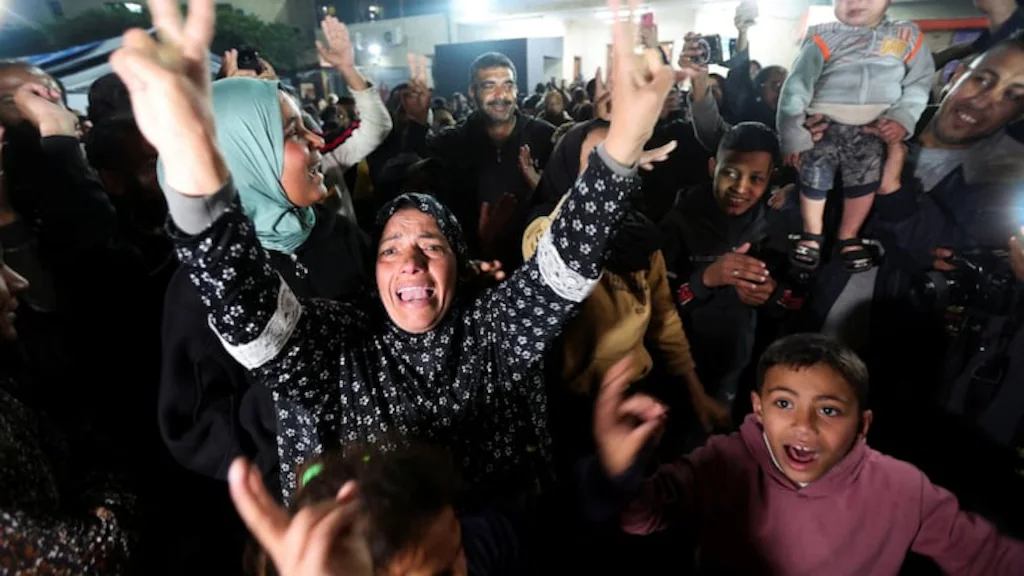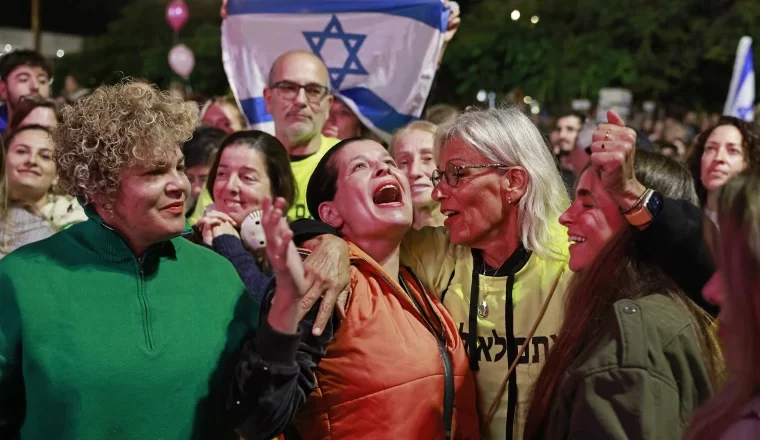After over a year of devastating conflict, Israel and Hamas have agreed to a ceasefire, marking a pivotal moment in the Israel-Gaza War. Signed on Jan. 15, the agreement is the most significant attempt yet to halt the fighting, but its future remains uncertain.

The conflict erupted on Oct. 7, 2023, when Hamas, a militant group governing Gaza, launched an unprecedented attack on Israel, killing more than 1,200 Israelis and abducting more than 250 hostages. In response, Israel launched immediate air strikes followed by a full-scale ground invasion by Oct. 27, killing over 46,000 Palestinians and displacing 90% of Gaza’s 2.3 million residents.
The war has deepened the humanitarian crisis and exacerbated instability in the Middle East as multiple ceasefire attempts collapsed after renewed escalations and continued mistrust.
“The political, geographical, and historical conditions within Israel and Gaza are genuinely unique and perhaps unlike any other situation I can think of in the world,” Upper School history teacher Mr. Brent Freedland said. “So far, after 80 years, we have no effective resolution. There’s a lot to take from that.”
After months of backchannel diplomacy and stalled negotiation, former President Joe Biden’s administration proposed a ceasefire plan on May 31, 2024. However, despite diplomatic efforts from the US, Qatar, and Egypt, Israel insisted on a ‘total victory’ over Hamas while Hamas refused to release hostages without full commitment by Israel to ending the conflict.
The breakthrough occurred just days before his presidential inauguration, when President Donald Trump increased pressure through a publicly announced ceasefire deadline, stating that “all hell will break out in the Middle East” if hostages were not released by his inauguration day.
The pressure was effective. The plan’s phase 1, having officially begun on January 19th, enforces a 42-day complete ceasefire and hostage exchange of 33 Israeli women, children, and elderly hostages and 1,900 Palestinian prisoners.
Additionally, Israeli troops are withdrawing from the Netzarim Corridor, a belt running east to west across the strip, allowing more than half a million displaced Palestinians to begin returning to their homes; many of which have been destroyed or heavily damaged.
Phase 2 moves toward a permanent ceasefire, requiring Israel’s complete withdrawal from Gaza and the return of all remaining living hostages. The third and final phase focuses on a long-term reconstruction of Gaza and the return of the bodies of deceased hostages.
So far, the ceasefire is holding. However, the complexity of the deal means even a small incident could escalate and threaten to derail it.
“There was a ceasefire in place previously before October 7 that Hamas broke, so I’m hopeful this ceasefire holds,” Sadie Hess ‘25 said. “At this point, it seems like the best possible solution. I’m not sure it will hold, but it’s a good thing for right now. ”
Looking forward, the ceasefire presents an opportunity for long-term peace and state-building in Gaza, but its success hinges on key factors.
Firstly, while Arab Gulf states and other international actors are willing to invest heavily in Gaza’s reconstruction, they refuse to do so if Hamas remains in power, fearing no end to the cycle of violence. With over 90% of buildings and infrastructure damaged, if not destroyed, reconstruction will take years.
Secondly, on Feb. 4, 2025, President Trump announced a plan to take over and reconstruct the Gaza Strip without US ground troop deployment, which would require relocating 2 million Palestinians to nearby countries.
Most importantly, however, this ceasefire marks the beginning of the end to the unbearable grief and uncertainty hostage families, both Israeli and Palestinian have faced for 15 months.
At GA, many members of the Jewish Student Alliance (JSA) have felt the weight of these events firsthand.
“A lot of members of JSA know people in Israel. I certainly do, so there are a lot of emotions that come up,” Hess said. “I think the most important part of the ceasefire is that we are getting our hostages back, which is obviously heavy on everyone’s hearts.”
GA may not be able to influence the ceasefire’s outcomes, but organizations like JSA provide safe spaces for students to process and support each other as the community navigates these uncertain times.
Trump’s quote source: https://www.cnn.com/2025/01/07/politics/trump-warning-gaza-hostages-negotiations-inauguration/index.html

